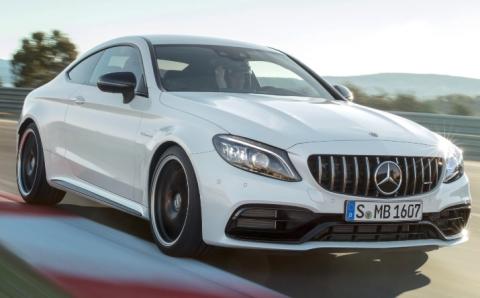Step by step instruction to replace the Secondary Air Pump on your Mercedes Vehicle. This Was filmed on a 2006 ML350 V6 Below is a list of all the vehicles that use the same part.
Brand Bosch
Part Type Secondary Air Injection Pump
Manufacture Number 0580000025
OE Number 0001405185
The mechanism by which exhaust emissions are controlled depends on the method of injection and the point at which air enters the exhaust system, and has varied during the course of the development of the technology.
The first systems injected air very close to the engine, either in the cylinder head's exhaust ports or in the exhaust manifold. These systems provided oxygen to oxidize (burn) unburned and partially burned fuel in the exhaust before its ejection from the tailpipe. There was significant unburned and partially burned fuel in the exhaust of 1960s and early 1970s vehicles, and so secondary air injection significantly reduced tailpipe emissions. However, the extra heat of recombustion, particularly with an excessively rich exhaust caused by misfiring or a maladjusted carburetor, tended to damage exhaust valves and could even be seen to cause the exhaust manifold to incandesce.
As emission control strategies grew more sophisticated and effective, the amount of unburned and partially burned fuel in the exhaust stream shrank, and particularly when the catalytic converter was introduced, the function of secondary air injection shifted. Rather than being a primary emission control device, the secondary air injection system was adapted to support the efficient function of the catalytic converter. The original air injection point became known as the upstream injection point. When the catalytic converter is cold, air injected at the upstream point burns with the deliberately rich exhaust so as to bring the catalyst up to operating temperature quickly. Once the catalyst is warm, air is injected to the downstream location — the catalytic converter itself — to assist with catalysis of unburned hydrocarbons.
Pumped air injection systems use a vane pump called the air pump, AIR pump, or colloquially "smog pump" turned by the engine via a belt or electric motor. The pump's air intake is filtered by a rotating screen or the vehicle air filter to exclude dirt particles large enough to damage the system. Air is delivered under light pressure to the injection point(s). A check valve prevents exhaust forcing its way back through the air injection system, which would damage the pump and other components.
Same part used for the following Vehicles
Mercedes-Benz SLK350 2006 - 2011
Mercedes-Benz E350 2006 - 2011
Mercedes-Benz ML350 2006 - 2011
Mercedes-Benz C230 2006 2007
Mercedes-Benz C280 2006 2007
Mercedes-Benz C350 2006 - 2011
Mercedes-Benz CLK350 2006 - 2009
Mercedes-Benz R350 2006 - 2011
Mercedes-Benz SLK280 2006 - 2011
Mercedes-Benz S550 2007 - 2011
Mercedes-Benz SL550 2007 - 2012
Mercedes-Benz CLK550 2007 - 2009
Mercedes-Benz CLS550 2007 - 2011
Mercedes-Benz GL450 2007 - 2012
Mercedes-Benz E550 2007 - 2011
Mercedes-Benz CL550 2007 - 2010
Mercedes-Benz C300 2008 -2012
Mercedes-Benz ML550 2008 - 2011
Mercedes-Benz GL550 2008 - 2012
Mercedes-Benz SLK300 2009- 2011
Mercedes-Benz GLK350 2010 - 2013
Mercedes-Benz G550 2009-2014
Mercedes-Benz S400 2010 - 2013
Mercedes-Benz ML450 2010 - 2011
Brand Bosch
Part Type Secondary Air Injection Pump
Manufacture Number 0580000025
OE Number 0001405185
The mechanism by which exhaust emissions are controlled depends on the method of injection and the point at which air enters the exhaust system, and has varied during the course of the development of the technology.
The first systems injected air very close to the engine, either in the cylinder head's exhaust ports or in the exhaust manifold. These systems provided oxygen to oxidize (burn) unburned and partially burned fuel in the exhaust before its ejection from the tailpipe. There was significant unburned and partially burned fuel in the exhaust of 1960s and early 1970s vehicles, and so secondary air injection significantly reduced tailpipe emissions. However, the extra heat of recombustion, particularly with an excessively rich exhaust caused by misfiring or a maladjusted carburetor, tended to damage exhaust valves and could even be seen to cause the exhaust manifold to incandesce.
As emission control strategies grew more sophisticated and effective, the amount of unburned and partially burned fuel in the exhaust stream shrank, and particularly when the catalytic converter was introduced, the function of secondary air injection shifted. Rather than being a primary emission control device, the secondary air injection system was adapted to support the efficient function of the catalytic converter. The original air injection point became known as the upstream injection point. When the catalytic converter is cold, air injected at the upstream point burns with the deliberately rich exhaust so as to bring the catalyst up to operating temperature quickly. Once the catalyst is warm, air is injected to the downstream location — the catalytic converter itself — to assist with catalysis of unburned hydrocarbons.
Pumped air injection systems use a vane pump called the air pump, AIR pump, or colloquially "smog pump" turned by the engine via a belt or electric motor. The pump's air intake is filtered by a rotating screen or the vehicle air filter to exclude dirt particles large enough to damage the system. Air is delivered under light pressure to the injection point(s). A check valve prevents exhaust forcing its way back through the air injection system, which would damage the pump and other components.
Same part used for the following Vehicles
Mercedes-Benz SLK350 2006 - 2011
Mercedes-Benz E350 2006 - 2011
Mercedes-Benz ML350 2006 - 2011
Mercedes-Benz C230 2006 2007
Mercedes-Benz C280 2006 2007
Mercedes-Benz C350 2006 - 2011
Mercedes-Benz CLK350 2006 - 2009
Mercedes-Benz R350 2006 - 2011
Mercedes-Benz SLK280 2006 - 2011
Mercedes-Benz S550 2007 - 2011
Mercedes-Benz SL550 2007 - 2012
Mercedes-Benz CLK550 2007 - 2009
Mercedes-Benz CLS550 2007 - 2011
Mercedes-Benz GL450 2007 - 2012
Mercedes-Benz E550 2007 - 2011
Mercedes-Benz CL550 2007 - 2010
Mercedes-Benz C300 2008 -2012
Mercedes-Benz ML550 2008 - 2011
Mercedes-Benz GL550 2008 - 2012
Mercedes-Benz SLK300 2009- 2011
Mercedes-Benz GLK350 2010 - 2013
Mercedes-Benz G550 2009-2014
Mercedes-Benz S400 2010 - 2013
Mercedes-Benz ML450 2010 - 2011
- Category
- ABS ESP BAS








Comments